Featured Artist, Diane Beem is the guest artist for Pop-Up beginning Tuesday, July 21 to July 27. Read on to learn more about her inspiration, her process, and her work.
Modern Fauvist
The following exchange between professor and student marked a pivotal point in Diane Beem’s artistic journey. The class was Abstract Expressionist Painting with New York Abstract Expressionist, Pat Lipsky at Hartford Art School in 1992.
After walking around and silently taking in what we were working on in the studio, Pat walked by my easel and pronounced, “You’re a Fauve!”
“….a …what?? …What does that mean?” the student, Diane Beem, stammered.
“Let that be your homework then. Go look up the Fauves!” , Lipsky insisted.
After graduating from Franklin and Marshall College a few years earlier with a Major in German and a minor in Fine Art, Beem threw caution to the wind and decided to pursue her love of painting. She had landed in Connecticut by chance and chose this school by chance as well.
Having had a pretty traditional art education up until this point, Beem was not at all familiar with Abstract Expressionism. Like many who are not educated about it, she thought it might be an “easy, fun class”. Her experience was anything but easy. It turned out to be the most challenging, enriching and intellectually stimulating experiences of Diane Beem’s art journey. It also determined the trajectory her art career would take for decades to come.
It is well known that with Pat Lipsky, painting class is never just a painting class. You were to become a student of Art History, Philosophy, Literature, Culture, along with all the esoteric phenomena that create an art movement. You were to paint, critique, read, study, write, speak, and breathe fine art. Exhaustive writing assignments, oral presentations, copious reading assignments, along with prodigious art production were expected. 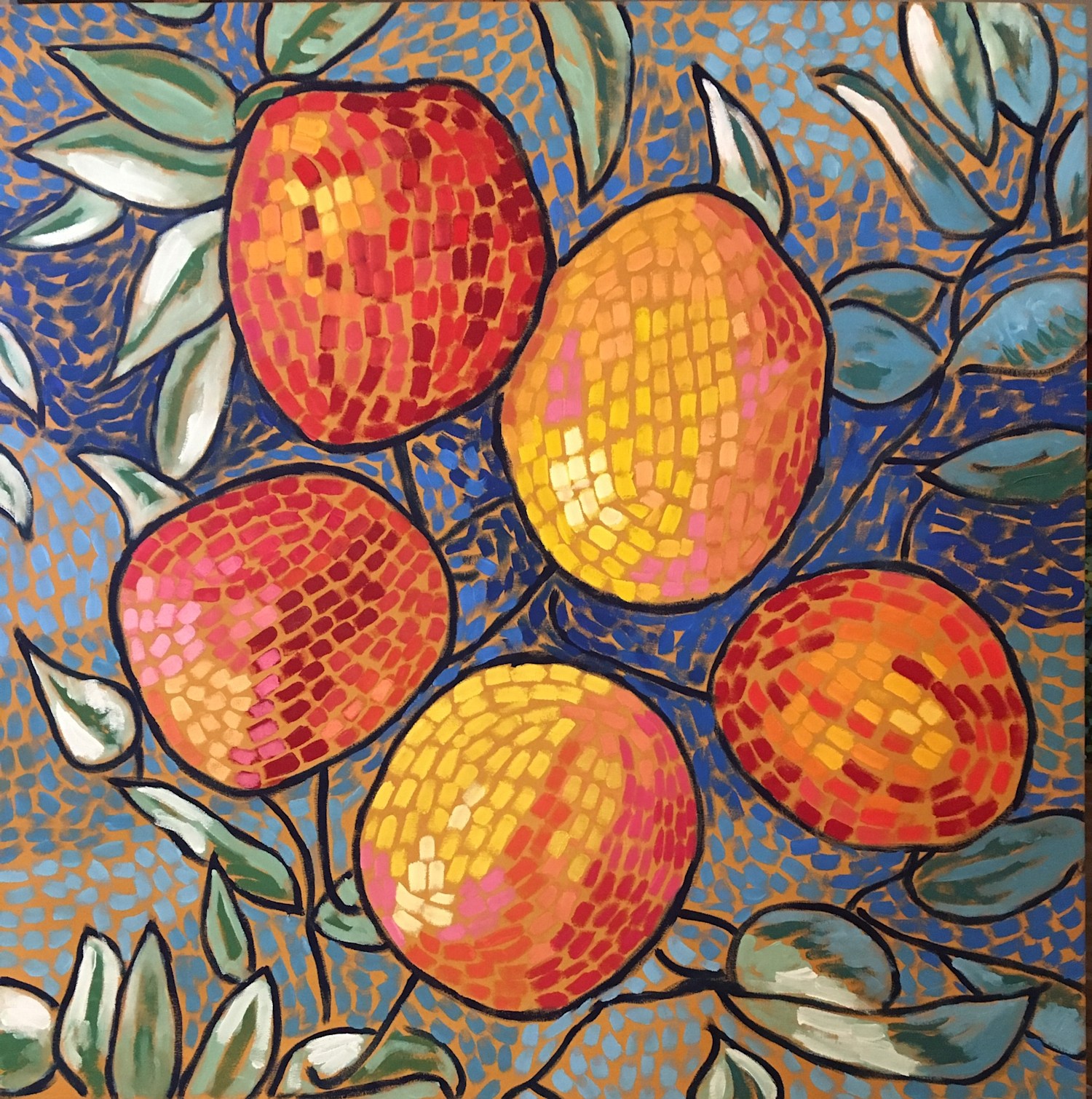
Although the academic part of Lipsky’s class was something that Beem relished and enjoyed, the actual art production was for the first time in her life, extremely difficult. “I was in such uncharted territory trying to paint non-objectively. It was humbling, embarrassing, and at times excruciating – especially the critiques!” Says Beem of the experience. And although she never fully clicked with the Abstract Expressionism for her personal artistic expression, she feels extremely fortunate to have had a teacher who was able to really see into the strengths of individual students and become their personal champion. “I couldn’t even spell Fauve……I was so embarrassed that I had to ask her to spell it so I could go to the library and look it up!”, admits Beem.
She was so intrigued that she went right after class and looked up the movement. Sitting on the library floor, with about a dozen art books open and splayed out all over the floor, an entire new world opened up to Beem, and she was hooked!
Diane Beem never remembers not making art. She always seemed to be working with her hands. As a small child she drew and painted with watercolors, stringing up clothes lines in her room on which to hang her paintings to dry. School was something to “get through”, so she could come home and do her “real work” of painting and drawing.
When she was around even or eight, she wanted to take a “real” drawing class. She begged her parents to find a “serious” class, not to be confused with a “kid art” class. To her good fortune, her parents obliged, and as luck would have it, their small town had an art institute, then named the Wyomissing Institute of Fine Arts, now known as the Yokum Institute for Arts Education, in West Lawn, PA. Taking this “real” art class along with adults was a complete thrill. Beem admits, “To this day I have no idea how my parents pulled that off, but I’m so grateful that they did!”
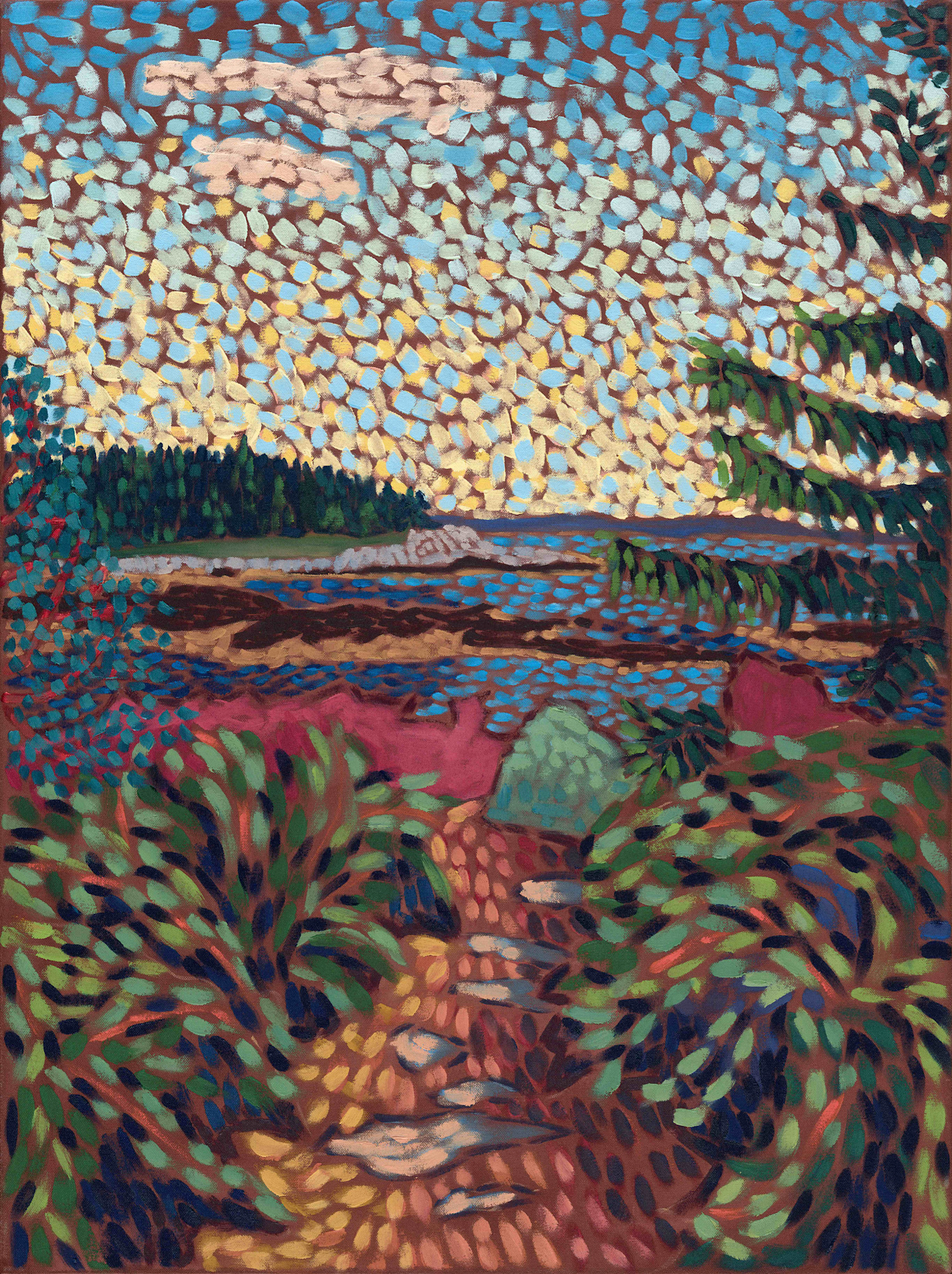
Diane Beem grew up in a very rural area of Pennsylvania, between Reading and Lancaster. At around age five, her family left the suburbs for a hilltop house surrounded by many acres of forest. Her father built a large tree house, and she and her brothers enjoyed endless hours playing in and exploring every inch of their new wilderness. She remembers also learning to love being alone in nature, and relishing the relationship to the natural world. Beem believes that it was these early formative times spent in the woods that helped form her ability to observe, and to enjoy the long hours of solitude so necessary for producing art. Today, the landscape, trees, and subjects related to nature feature strongly in her work.
Although Beem’s parents were not artistic, her maternal grandfather, her “Opa” was. One Christmas, she had been gifted a very detailed oil paint-by-number set depicting a scene in Venice. At the age of ten, the kit just stumped her. When her Opa visited and saw how she struggled to mix the colors and add them to their tiny pre-defined shapes, he said to her, in his heavy German accent, “Vee Vork on zis togesah…Ya!” And for the next few weeks, she watched in amazement as he not only mixed the colors, but took off on his own, creating an amazingly beautiful water scene depicting the canals, gondolas, and houses of Venice. “Every day was a new adventure watching him paint!” Beem says. “To me it was pure magic!”
Although Beem had many opportunities in school art classes, she found the school assignments restrictive, and not much of an outlet for free expression. She continued to take classes and the Art Institute, and found real encouragement there. Diane Beem went to high school outside of Philadelphia, to Westtown School, and was very fortunate to have had wonderful art classes and teachers there who encouraged her very much. The school had a very strong art department, and the facilities provided lots of room for experimentation from print making to sculpture. Her art teachers encouraged her to move forward with more formal training.
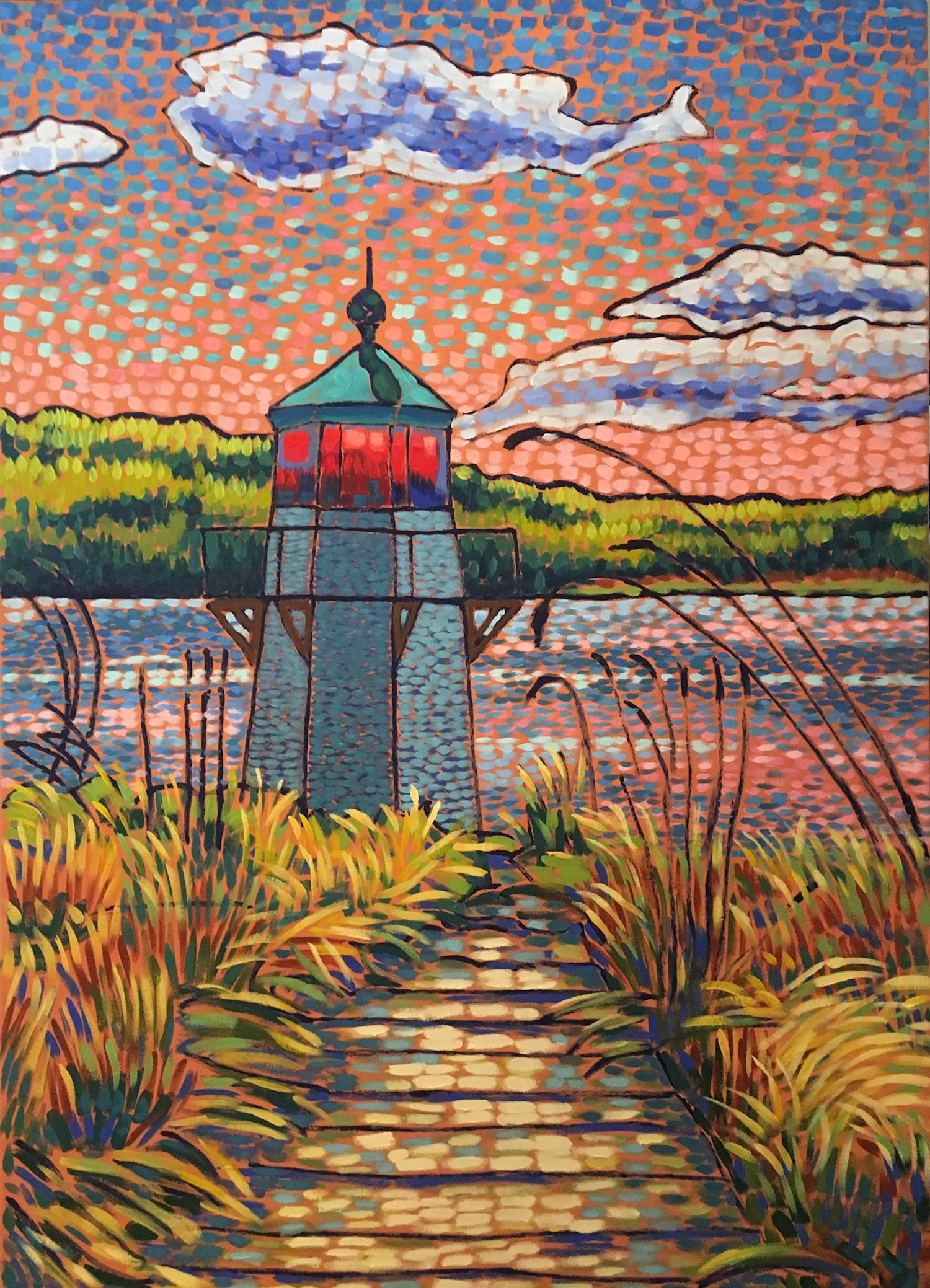
During high school she became fascinated with another subject, the German language and culture. Her mother grew up in Berlin and came to the US after World War II. Not only was Diane Beem extremely curious about her German ancestry, she learned the language easily and became quickly fluent. She began traveling to Germany every chance she got. Beem eventually majored in German, in at Franklin and Marshall College, but also kept up with art classes. Even while studying in Germany, she found time to take art and photography classes, and enjoyed seeking out art museums in the major cities.
After leaving Hartford Art School, Beem concentrated on spending as much time painting as possible. At this time she realized she was at a crossroads, and found it difficult to pursue more schooling. She really felt that she needed to retreat into the studio and just concentrate on trying to emulate her beloved Fauves, and see if anything could come of it. She worked temporary office jobs for a few months at a time, then would take off a few months to paint full time. This pattern continued until she and her husband started a family. In the solace of her studio, Beem began an intense study of the Fauves and how their paintings worked. She was fascinated with the composition, and how they seemed to flatten the picture plane using geometric chunks of space. Also, using what she had learned from Lipsky, who insisted she study Joseph Albers, she continued her in depth study of color relationships.
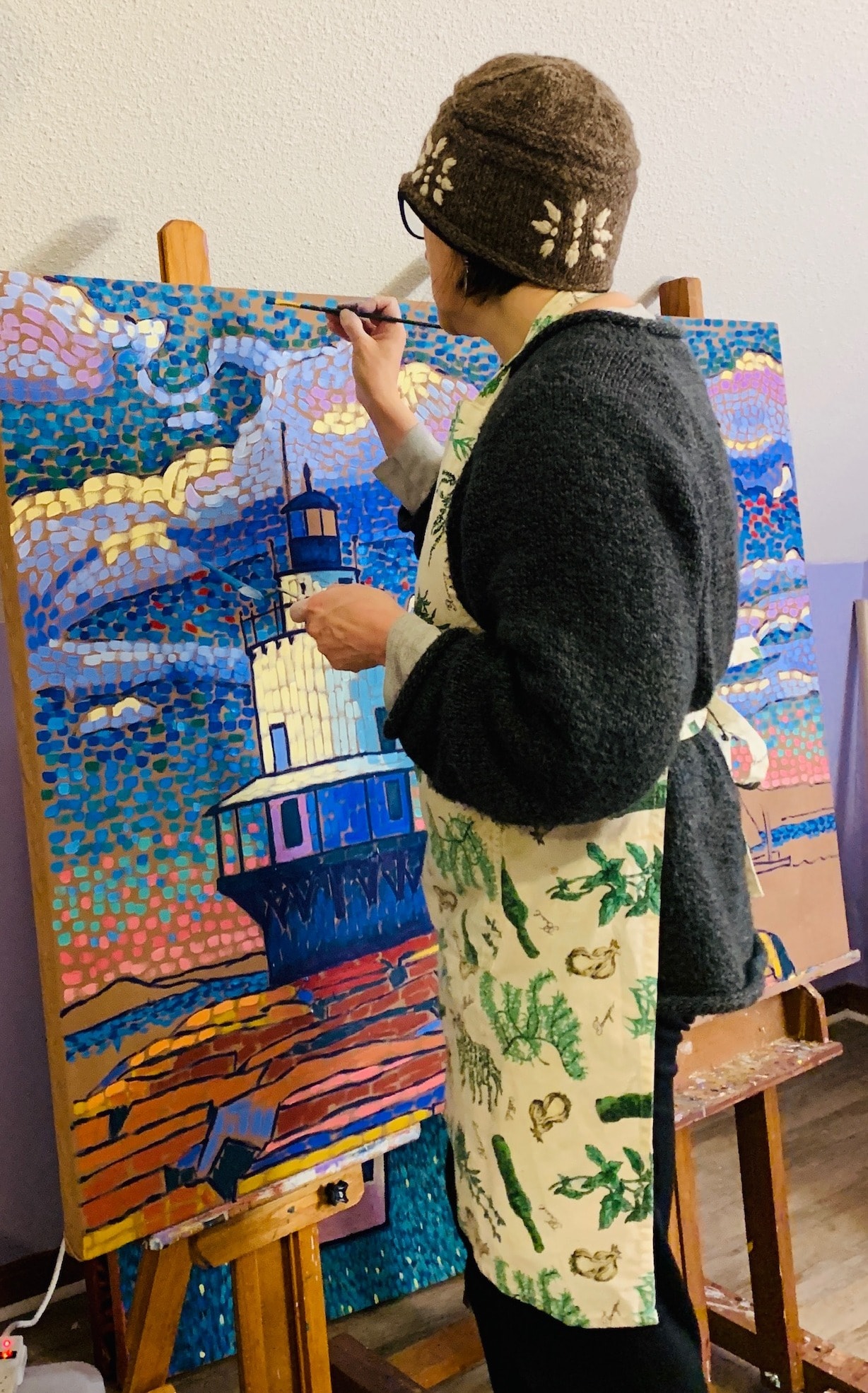
In her style today, you can see these elements drawn from both Abstract Expressionism and Fauvism. For example, she begins each piece with a colored ground, which sets the mood for the entire piece. This ground color is meant to be seen through the points of color that make up the complete image. That way it sets a mood or a feeling for the overall piece. Then it really becomes a puzzle of color relationships, as the individual points of color have not only relationship to each other and the whole composition, but the ground color as well. Beem keeps the goal of abstract expressionism, for the piece to be “synoptic”, or seen all at once without a central focal point. Beem works hard to balance this with the fact that her works are subjective, so she must also have the goal that all her points of color will come together and elevate the subject matter to something new and inspiring.
During the next decade Beem continued to paint and hone her “Modern Fauvist” style. A breakthrough came one day in 2004 when she felt like everything she had learned from both Abstract Expressionism and Fauvism collided together in one piece. She had painted a canvas with a bright red “ground”, and the next day came in and painted in short strokes of saturated color, letting the ground show through, and being very cognizant of how these points of color related to both each other as well as the ground color, and having the goal of the entire piece being “synoptic”, taking from her Abstract Expressionist training, but at the same time delighting in her subjective themes of the landscape and other themes of nature.
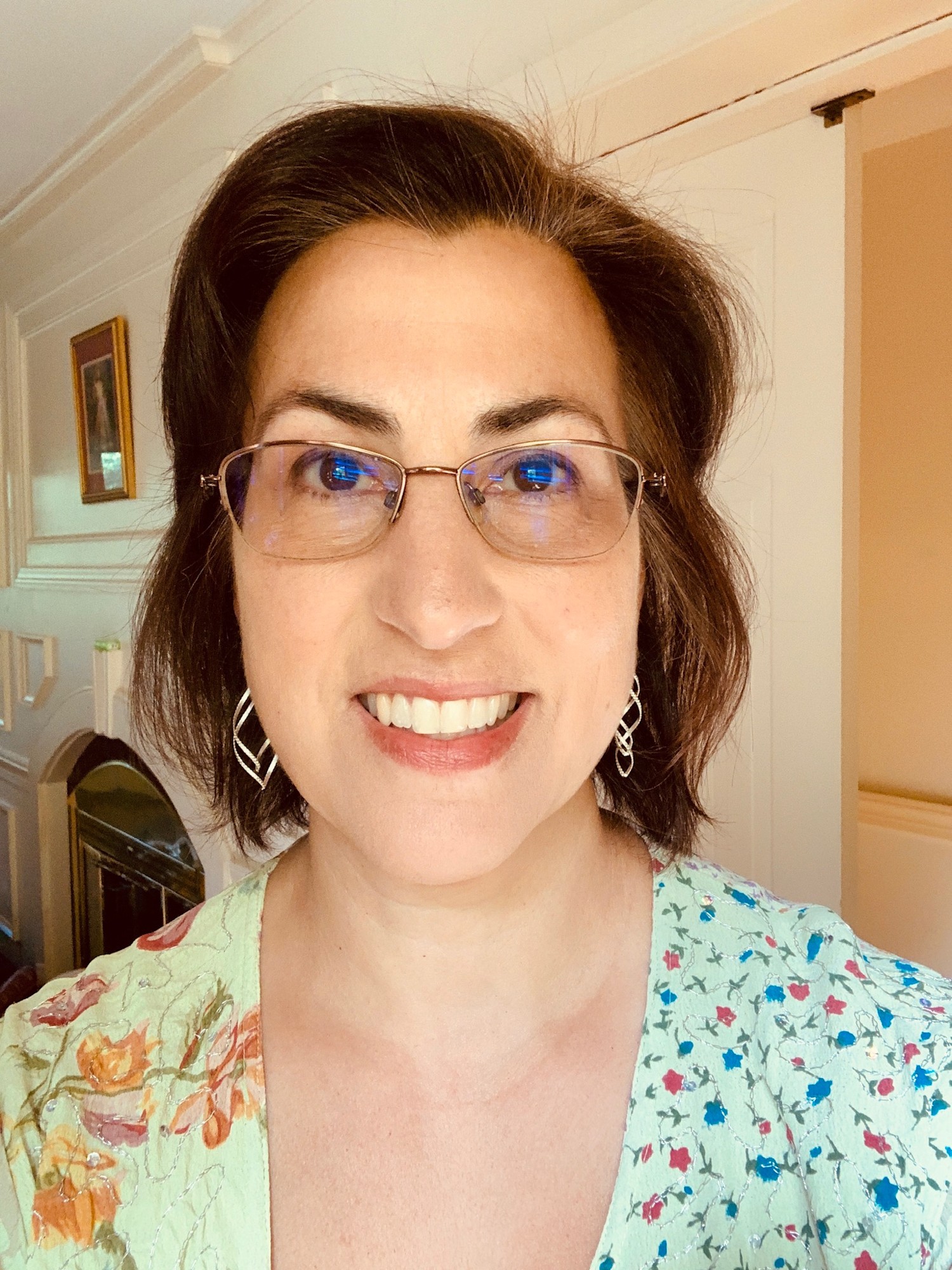
While she was raising her four children, she began to market her work through direct mail and the internet. This worked very well for her and allowed her to work while being home with her children. Diane Beem has worked both independently and through galleries, and her work is currently in private collections throughout the United States.
For more info about Diana Beem check out the following links:
